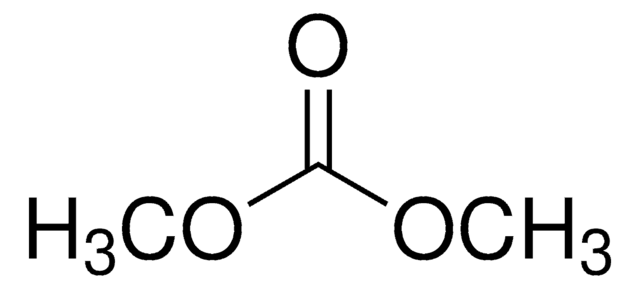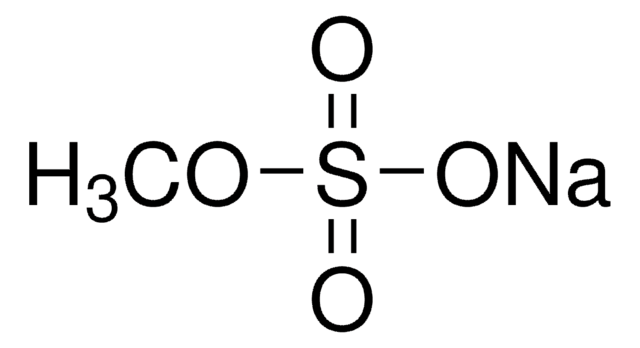320293
Dimethyl sulfate
≥99%
Synonyme(s) :
Sulfuric acid dimethyl ester
About This Item
Produits recommandés
Densité de vapeur
4.3 (vs air)
Niveau de qualité
Pression de vapeur
0.7 mmHg ( 25 °C)
Essai
≥99%
Forme
liquid
Température d'inflammation spontanée
923 °F
Indice de réfraction
n20/D 1.386 (lit.)
pb
188 °C (lit.)
Pf
−32 °C (lit.)
Densité
1.333 g/mL at 25 °C (lit.)
Chaîne SMILES
COS(=O)(=O)OC
InChI
1S/C2H6O4S/c1-5-7(3,4)6-2/h1-2H3
Clé InChI
VAYGXNSJCAHWJZ-UHFFFAOYSA-N
Vous recherchez des produits similaires ? Visite Guide de comparaison des produits
Application
It can also be used as a reagent:
- For the preparation of quaternary ammonium acrylic monomer as a potent antibacterial agent by the quaternization of 2-dimethylamino ethyl methacrylate.
- Along with dimethyl sulfoxide for the synthesis of epoxides from aldehydes and ketones via formation of trimethylsulfonium cation.
- To prepare an oxygenate additive for diesel by the methylation of glycerol.
Produit(s) apparenté(s)
Mention d'avertissement
Danger
Mentions de danger
Classification des risques
Acute Tox. 2 Inhalation - Acute Tox. 3 Oral - Carc. 1B - Eye Dam. 1 - Muta. 2 - Skin Corr. 1B - Skin Sens. 1
Code de la classe de stockage
6.1A - Combustible acute toxic Cat. 1 and 2 / very toxic hazardous materials
Classe de danger pour l'eau (WGK)
WGK 3
Point d'éclair (°F)
181.4 °F - closed cup
Point d'éclair (°C)
83 °C - closed cup
Équipement de protection individuelle
Faceshields, Gloves, Goggles, type ABEK (EN14387) respirator filter
Listes réglementaires
Les listes réglementaires sont principalement fournies pour les produits chimiques. Seules des informations limitées peuvent être fournies ici pour les produits non chimiques. L'absence d'indication signifie qu'aucun des composants n'est répertorié. Il incombe à l'utilisateur de s'assurer de l'utilisation sûre et légale du produit.
EU REACH SVHC Candidate List
EU REACH Annex XVII (Restriction List)
Faites votre choix parmi les versions les plus récentes :
Déjà en possession de ce produit ?
Retrouvez la documentation relative aux produits que vous avez récemment achetés dans la Bibliothèque de documents.
Les clients ont également consulté
Notre équipe de scientifiques dispose d'une expérience dans tous les secteurs de la recherche, notamment en sciences de la vie, science des matériaux, synthèse chimique, chromatographie, analyse et dans de nombreux autres domaines..
Contacter notre Service technique











